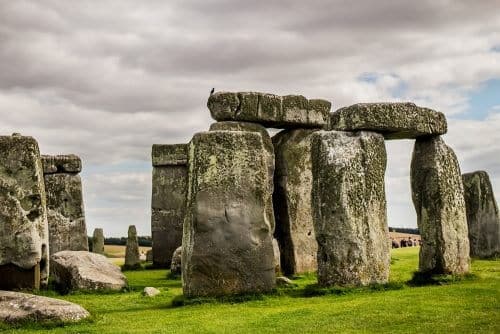Dates are a deceptive thing/Amir Teicher

On December 31, 1900, something happened. One of the stones in the prehistoric stone circle Stonehenge, somewhere on a green hill an hour's drive from London, has collapsed. The headlines in the British Times were not long in coming: at this ancient site, which embodies the stability of the past, a stone fell - and precisely on the last day of the nineteenth century. The symbolism was clear: the new century begins with a collapse of the traditions of the past century. Why did the writers consider that day, at the end of December 1900, to be the last day of the nineteenth century? Didn't the nineteenth century already end at the end of December 1899, that is, a year earlier?
It turns out that the answer to this question, which was supposed to be simple and clear, is not so at all. The source of the problem is somewhere before 2015, in the year 0. The year 0, which was supposed to be on the axis between AD 1 and AD 1, does not exist. The first year of AD was year 1, and the year before it, 1-. On a standard measuring ruler between the beginning of the ruler and the first centimeter marking, you can find tiny lines that symbolize the ten millimeters that fill the "zero centimeter". However, on the timeline, no month passed and no raven called in 0 AD. She just wasn't. And since the first year AD was year 1, in order for the first century AD to contain a full hundred years, it had to end at the end (and not at the beginning) of the year 100. The next century began in the year 101 and ended at the end of the year 200. And the 19th century began in 1801 and ended in December 1900.
In truth, the first, second, third, fourth and fifth centuries also existed only in retrospect, since the Christian counting did not begin before 525 AD, and several more centuries passed before this counting became widespread and accepted. Christian counting replaced a variety of earlier counting methods: thus, 532 AD came exactly one year after 247 AD Diocletian - and in its place.
But what's the point of counting time in hundreds of years anyway? There are time units that are natural and there are units that are nothing but divisions or groupings of other units. The year and the day and the Hebrew month are periods of time that originate from the movement of the planets, the rotation of the earth, and the sunlight returned to us from the moon. All other units are but subdivisions or unions of these units. The day was divided into twenty-four hours - but could easily be divided in another way. The hour was divided once into sixty minutes, and its second division into sixty was, accordingly, called a second. The main benefit of the divisions into sixty and twenty-four was that they made it easier to make further divisions. On the other hand, when years were grouped together, they were not grouped in dozens but in tens and hundreds. The kibbutz has one simple source: our ten fingers, with which we learn to count. If we had a dozen fingers, or eight legs, we wouldn't even think of looking at "hundreds of years" or "a decade".
Unlike the sport of memorizing dates that is commonplace, perhaps, in high school history classes, professional historians recognize that dates and units of time on their own have no real value. A reference point in time only receives its meaning in relation to other reference points: a certain event occurred long before, or a little after, or at the same time, with another event. The location of the events on the time continuum is a necessary, even if not sufficient, condition for analyzing processes and finding causality. This is the real importance of dates. And hundreds? Despite the great comfort in referring to the "20th century" or the "18th century", few historians will define such periods precisely according to the calendar, simply because such a definition lacks real analytical value. For example, the 19th century, according to many historians, lasts 125 years, because it began with the French Revolution (1789) and ended with the First World War (1914).
Remember this the next time you make an appointment with a historian. Set a relative time with him ("another two days and four hours"), not absolute. Otherwise, it is hard to know when he will appear.
Amir Teicher
History lecturer at Tel Aviv University interested in human thinking, science, and the history of modern Europe. Together with his amazing wife, he is raising two wonderful children.

2 תגובות
This getting bogged down in insignificant words and numbers is, in my opinion, a bit tiresome.
But I really liked the sword - Amir, I really hope that your life is as happy as you were able to express in only nine words. You made me smile, thanks
The reason for dividing the hour into 60 is in Babylon. In Judaism, the years are not counted in tens, but rather in sevens, every 7 is called a Shemita and every 50 is called a Jubilee. Which is actually the first year in the new cycle of seven times seven. Lucky that the form of calculation was not adopted forever.
The use of the Jewish counting of years for the creation of the world is also late. Admittedly, it is according to a Midrash that appears in the Gemara. but was not used until the middle of the Middle Ages.